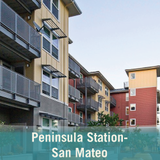
Access to housing is the biggest challenge in San Mateo County today. The Jobs/Housing Gap Task Force is bringing community leaders together to build countywide momentum for closing the divide between wage levels and housing achievability.


The Task Force will:
- Learn about the challenges created by the current housing market
- Work together to develop a menu of solutions
- Commit to bring those solutions back to their community for further discussion and potential adoption
The goal is not to find a universal answer but develop a variety of paths that each individual city, town and community can consider to meet their own unique needs.
Who is participating?
San Mateo County Supervisors Don Horsley and Warren Slocum are co-chairing the Task Force. Groups invited to participate include representatives from all 20 cities and towns in San Mateo County, business organizations and large employers, educators, housing developers, community-based organizations providing housing services, labor and community advocates.
How does it work?
The Task Force began meeting Sept. 24, 2015 and continues through June 2016. The Task Force will first build a common understanding of the challenge, learn what is already being done both inside and outside the county and finish by exploring possible solutions. Following a public input process in the spring, the Task Force will create a list of opportunities to promote housing preservation and development.
The Task Force meetings are an opportunity for members to actively learn and engage in discussions around housing challenges and solutions. Observers are welcome dependent on space available. Comment cards will be provided to submit written input and questions at the Task Force meetings. Additionally, the public can submit input and questions via email at jobshousingtaskforce@smcgov.org. All public comments will be share with the Task Force members.
What happens next?
The Task Force members will commit to sharing the “menu of options” and developed materials with their constituents, elected officials and communities to consider possible action and continue the conversation.





